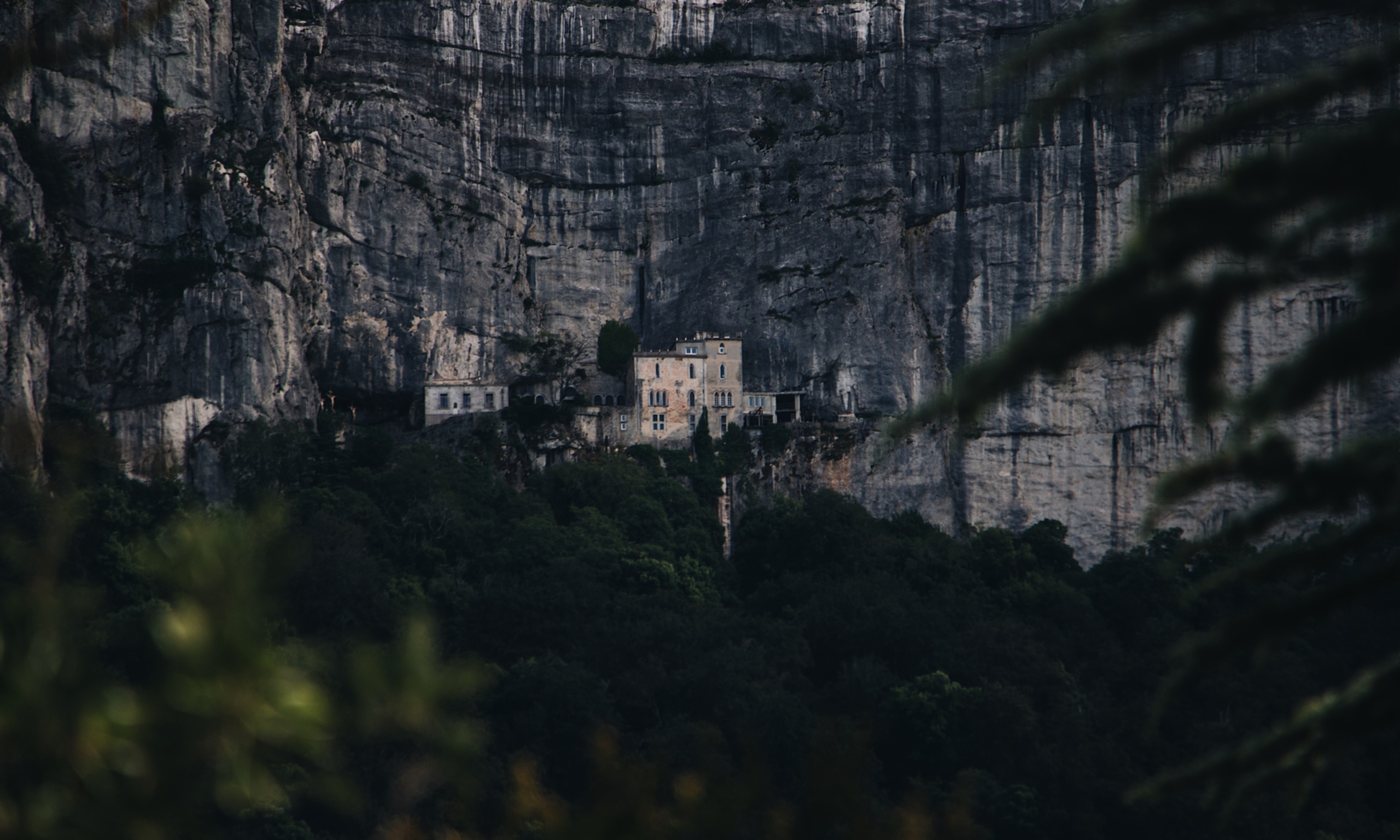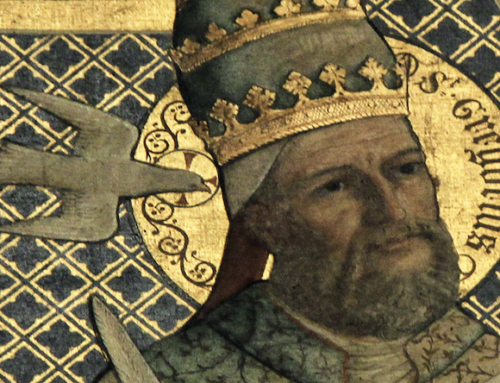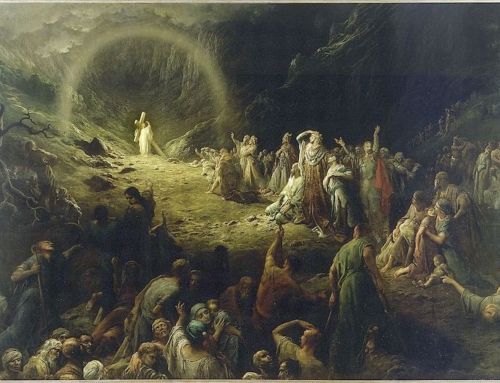Elle est là [She is here]. I knew what he meant, the French Dominican priest beside me. We were from different continents and spoke different languages but we were brothers, both sons of St. Dominic, and we understood each other perfectly.
High above us in the strange face of the cliff, the mouth of a tomb-like cave opened up. Between us and the cave, spanning the assent, climbed a forest, its trees uncharacteristic of the contemporary region, indicating the antiquity of its foliage. But the flowers of Provence, especially lavender, still grow there and make La Sainte-Baume a cave in a garden.

Elle est là. Where else would one expect to find Mary Magdalene but by a cave in a garden?
The Gospels tell us that the body of Jesus rested in such a place: “Now in the place where he had been crucified there was a garden, and in the garden a new tomb, in which no one had yet been buried” (John 19:41; cf. Matt 27:60; Mark 15:46; Luke 23:53).
And there Mary Magdalene sat and wept. After the disciples had left and the tomb was sealed, before the Easter dawn broke, and after Peter and John left bewildered, she wept beside the cave in the garden.
Desire kept her there. Desire made the tears flow since she didn’t know where her beloved Lord was. She wept because she “sought him whom [her] soul loves; [she] sought him, but found him not” (Song 3:1).
But then she found him. Or, rather, he found her and, speaking her name with tender love, he fanned the flames of her desire. Jesus commissioned her to cast abroad this fire of holy desire: “Go to my brothers and tell them” (John 20:17). She went to the apostles but, if the legends are true, she didn’t stop there.
Elle est là. From Palestine to Provence, so the story goes, Mary sailed and preached, the burning brand igniting divine charity in souls. Eventually, however, her fire found a hearth. Or, as Scripture says, like a “dove in the clefts of the rock, in the secret recesses of the cliff” (Song 2:14), she came to another cave in another garden.
For thirty years, desire kept her there. Again, she sought her beloved but she no longer wept. She knew where he was. Every day her desire carried her from the cave to the mountaintop above, transported by angels the legends say. Rapt in contemplation, she awaited and foretasted the desired reunion with her Lord. Surely Jesus’ last words to her, “I am going to my Father and your Father, to my God and your God” (John 20:17), echoed in her heart. One day she would be where he is, together with their God and Father.
That was long ago; Mary no longer desires since she rests where her Lord is, never to be parted. On the rock of La Sainte-Baume, however, one will find her still. Elle est là.
They advised me, my brother Dominicans, to ascend the summit for sunrise. I climbed the path—Le Chemin des Roys (The Path of the Kings) so called because monarchs as well as monks have made this pilgrimage—that twists through woods heavy with antiquity. Beyond the tree line and after a scramble over rocks, I came to the small chapel that marks where Mary would pray. Leaning my head against the stones of the chapel I gazed out at the rising sun, symbolizing the Dawn from on high and foreshadowing the second coming of the Sun of justice.

As I prayed Morning Prayer with the first rays of light, I understood why monks and friars have dwelt here for a millennium and a half. On the summit in the first light of morning or in the cave in the silent darkness, peace lies thick and prayer seems to come naturally. There, hidden in the clefts of the “Rock of Mercy,” one can rest in love and rise refreshed.
Here Mary still preaches, still casts the fire of her desire into the hearts of pilgrims. She who knew the mercy of the Lord beckons one to her cave, to her mountain, and seems still to whisper the words that lit the world on fire: “I have seen the Lord” (John 20:18).
May our hearts burn with a desire like that of Mary Magdalene until we rest with her in the presence of the One who alone satisfies the soul.
✠
Photo by Mael Balland on Unsplash







